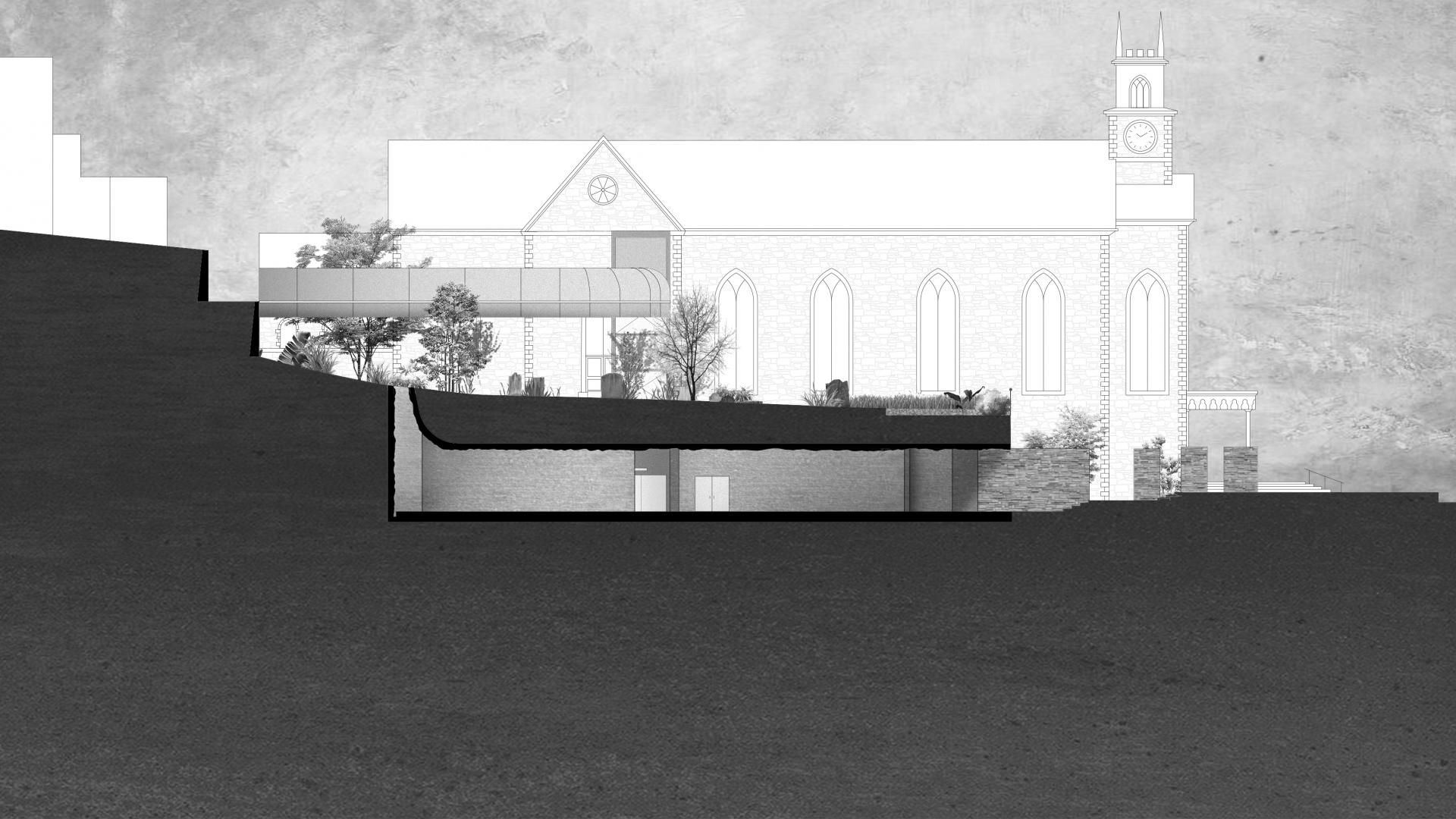Image

Qing Shi
Unite the Divided
The modern era has marginalized death by professionalizing the care of the dying in hospitals and the dead in funeral homes. Today a growing number of families reject de-personalized, alienating funeral experiences and instead, seek rituals that are more related to pre-modern practices. Past practices developed when death was still omnipresent, and people performed their own authentic expression of the individual self and interpersonal relations. Bringing spatial, physical experiences of rituals back by personalizing a previously institutionalized occasion, the freedom of being able to choose the way we live has been extended to self expression in death and mourning.
By adapting the disused churchyard of St. John’s Episcopal Cathedral in Providence, I survey the transition between life and death. Unlike traditional rituals, this space provides a personalized journey allowing the bereaved, even the deceased, to present their interpretation of the actual moment of physical transition. Euthanasia, Living Funeral, the Vigil … these rituals practiced in the space close the gap between the social and biological death by transforming this once-sequestered stage of life into a social, spiritual, and self-growth journey.
The thesis explores how landscapes and architecture can embed spaces for the final farewell. Inspired by the city Eusapia in Calvino’s Invisible Cities, the intended design strategy is to keep the upper surface of the landscape untouched as much as possible, but create a spatial condition of the churchyard downwards. This strategy is aimed to create a juxtaposition of the two sides of the world separated by death. The below condition is created by a tunneling technique that creates an earthy quality in the spaces, emphasizing the reality of being underground, beneath a churchyard.